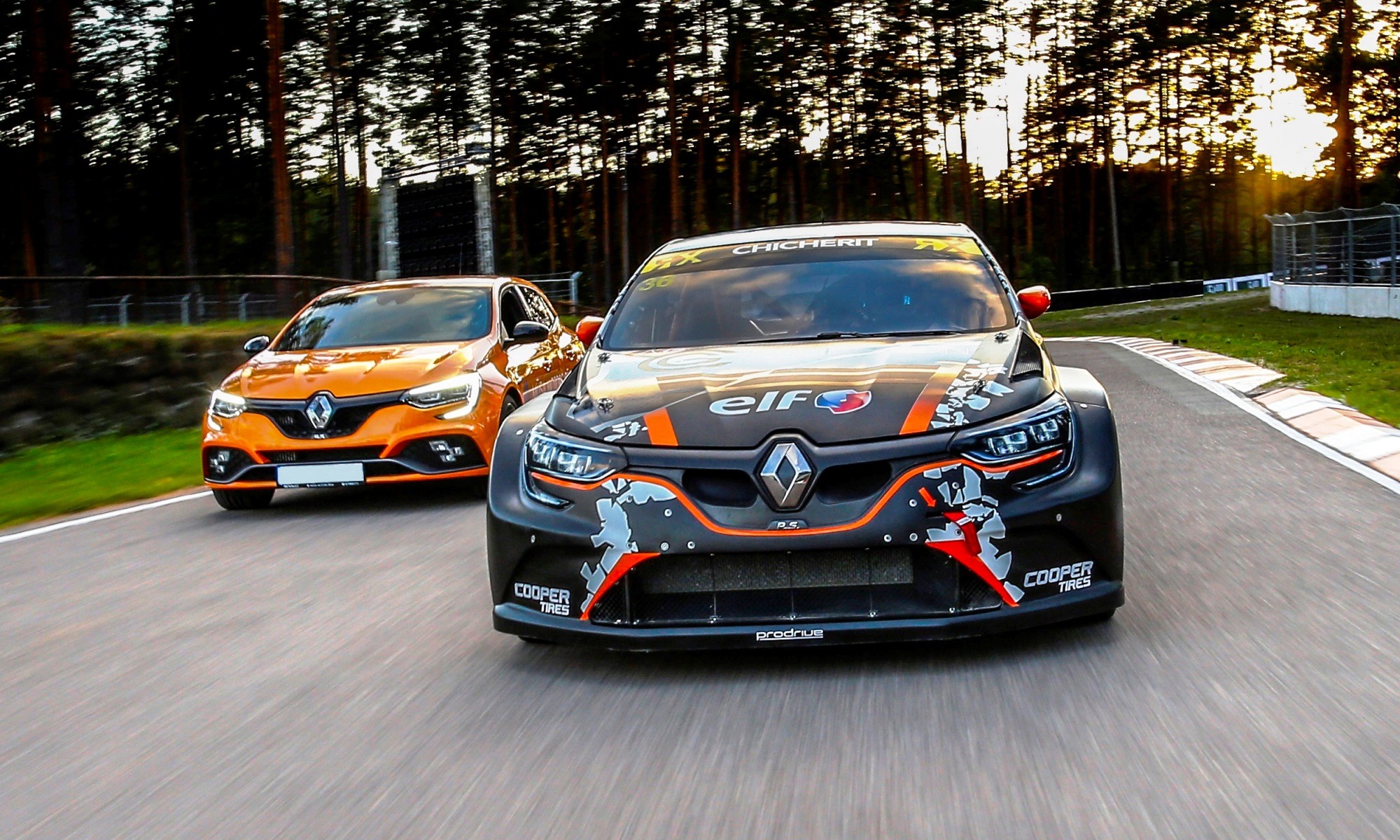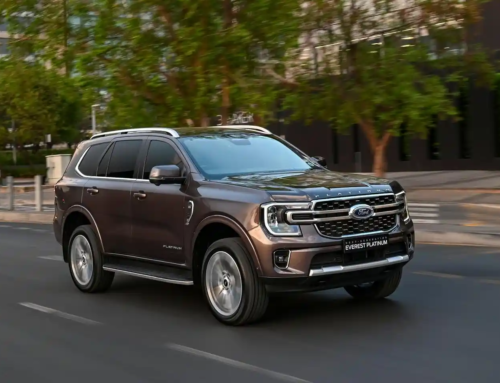A few weeks ago we brought you a review of the Renault Megane RS EDC Lux. That model is the automatic version of the hot Megane RS performance derivatives. More recently we spent time with the Renault Megane RS Cup and share our thoughts here.
Incidentally, we had the car on loan during the same time the FIA World Rallycross event was held in Cape Town. We managed to get that very cool pic you see above with the Megane racecar courtesy of GCK Prodrive, that uses a Megane in the series.
Read our views on the Renault Megane RS EDC Lux by clicking here.
Near-identical twins
The two Megane RS models on offer from Renault are near identical. From a visual point of view, they are near impossible to differentiate. They both share the slightly widened body shell that sets them apart from lesser powered siblings and wear massive alloys. This test unit was also covered in an eye-catching shade of metallic paint.
Look closely and you will note that the brake caliper colours differ on the two cars. On the Lux these items are silver in colour and on the Cup they are a more racy red.
You can read the full list of RS-specific differences in our earlier driving impression (link above).
Similar powertrain
The Renault Megane RS Cup shares its engine with the Lux model. That is to say it has the same an all-new, direct injection 1,8-litre turbocharged engine. The unit is good for 205 kW with 390 N.m of torque produced between 2 400 and 4 500 r/min. Both are handy figures that place it firmly among chief rivals such as the VW Golf GTI Clubsport and a little behind the hard core Honda Civic Type R.
The differentiating factor between the Lux and Cup is the transmission. While the Lux variant uses a dual-clutch transmission to transfer power to the front wheels, the Cup version uses a good ole six-speed manual. More tantalisingly, inside that transaxle case is a limited slip differential (LSD).
The net effect
As described in our earlier write-up, the new engine is a punchy unit that delivers the goods, but really does need to wound up to extract the best from it. In this manual derivative one needs to be constantly aware to avoid turbo lag. One does not have the luxury of simply mashing the throttle to drop a few gears. Thankfully, the manual shifter has the right balance of mechanical feel and damping so as not to feel too notchy in one’s palm.
The Megane RS really comes alive when you start to tackle a few corners, the tighter the radius the better. We found that the Lux version, with its active rear-wheel steering, was a hoot to pilot. The Cup version ramps up the excitement levels even further. Active rear steer is present in this car as well and it acts in conjunction with the LSD to create a car that is extremely pointy and chuckable. Throw it hard into any corner and climb on gas early to engage the LSD for maximum traction and the car feels as though it is pivoting around its vertical axis, not led by its nose as most front-wheel-drive cars are.
For the most part the Megane RS Cup feels and behaves like a rear-wheel drive car, which is great fun. In fact, this is the pointiest, least understeery front-wheel-drive road car I have ever driven. The set-up is so good that it feels as though it could easily handle an additional 20-30 kW without feeling overwhelmed.
Summary
Renault’s reputation of building entertaining hot hatches took a bit of a pasting with its current generation Clio RS models, thanks mainly to that woeful EDC transmission. Thankfully cars such the Renault Megane RS Cup are setting the record straight. If you are an experienced pilot that is not afraid of car that feels as though the rear axle is swinging around, then you will enjoy driving the Renault Megane RS Cup. It’s not for everyone, but those who enjoying the thrill of driving will love it.
And if this is what the Cup model is like to drive, we can’t wait to get our hands on the 224 kW/400 N.m Trophy version when it arrives here in the second half of 2019.








Leave A Comment